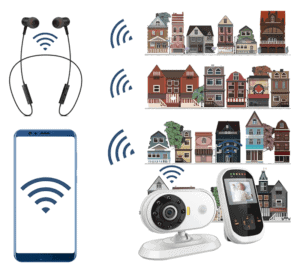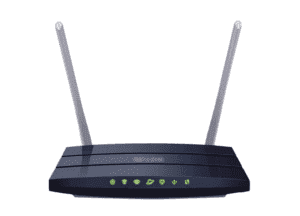By following this guide, you will learn how to set up your router for better Wi-Fi. Buffering on your Firestick can be caused by incorrect router placement. A good Wi-Fi signal and coverage can fix a lot of these issues.
The Amazon Firestick is certainly the most popular streaming device on the market right now. This is largely due to its low price and ability to jailbreak it with just a few simple tweaks. It’s a perfect streaming device for beginners as well as advanced users who wish to cut the cord.
However, just like any other streaming device, you must properly maintain and set up your Firestick to avoid running into issues. Buffering is one such issue you’d obviously rather avoid. If you’ve tried other tips to help resolve buffering and none have helped, if could be an issue with your router placement. Watch the video for full details on how to Set Up Your Router for Better Wi-Fi. Or follow the written step-by-step guide below instead.
Table of Contents
Where is Your Router Located?
If you’re getting poor or weak Wi-Fi speeds on your Firestick or other streaming devices, it could be down to where your router is located. This may sound insignificant but a small change can actually make a huge difference! Good placement of your router can improve the Wi-Fi signal and coverage in your home. In turn, this will give you much better performance.
1. Set Up Your Router in a Central Location
The best place to put your router is in the centre of your home. This is because the signal from your router doesn’t just broadcast in one direction. Instead, it’s more like ripples in water.
If you’ve placed your router in a far corner of your home, you’re probably reducing your usable coverage by half. The other thing to consider is that the signal is stronger at closer distances. So it’s best to try and reduce the distance between the router and any connected devices. If you can, place your router in a more central location instead of stuffed away in a back room.
However, that’s not always ideal so it’s worth considering which parts of your home you want better Wi-Fi coverage. You can then move your router according to a better location.
2. Consider Moving Your Router Higher for Better Wi-Fi
Secondly, if possible you can try and move your router to a higher position. Although ripples in water are a good way to visualize how a Wi-Fi signal works, the signal radiates out horizontally and vertically. It’s best to avoid placing the router too low. So, if you’ve got it at floor level, or on a low shelf, raising it up onto a higher shelf or on top of a piece of furniture can really help.
3. Set Up Your Router Away From Walls and Windows
Thirdly, try to cut down on the number of walls the signal has to travel through and stay away from windows. The signal from your router works best in open air. The ideal situation for the best signal and coverage would be a direct line of sight to your router at all times. But this isn’t usually possible when using Wi-Fi in multiple rooms.
Dense material like brick will absorb the Wi-Fi signal so keeping the amount of walls between you and your router is key. Also, never place your router in a cupboard and try to keep your router away from other objects as they will have a negative impact on your overall signal and coverage.
4. Clear Obstacles for Better Wi-Fi
Fourthly, clear any obstacles that may be blocking the signal from your router. There is one material in particular that will have a significant impact on your Wi-Fi signal and coverage and that’s metal.
So that could be metal shelving, refrigerators and even large water heaters. They will reflect and absorb your Wi-Fi signal creating dead zones. So if possible make sure nothing large and metal is between your router and your device.
Another obstacle to keep your router clear of is water. Do you have a really nice fish tank for example? That’s great, but you will notice that if you keep your router away from it, this can improve your signal. However, if you have to have your router near your fish tank then try to keep it above it.

5. Reduce Interference and Noise
Fifthly, take a look at interference and noise. It’s easy to spot a big fish tank, but just as bad are the obstacles that you can’t physically see. Such as lots of devices using the same wireless band as your router. In most cases with Wi-Fi this will be 2.4 GHz.
From Bluetooth devices to mobile phones and tablets and even to baby monitors – they are all fighting for the same air space and things can get really crowded. If you live in a built-up area you’ll also have to consider your neighbours signals too.
If you can, try to cut down on the number of devices that are switched on. For example, turn Bluetooth off if you’re not using it and only have the baby monitor on when it’s needed. These small changes can really help to reduce the strain on your 2.4GHz band.
The best solution is to check if your router has the newer wireless band 5GHz which most routers these days do. If it does then make sure to utilize it.

6. Set Up Antennas Correctly
Lastly, once you’ve positioned your router in the best location in your home, have a think about the router’s antennas. Make sure the router is placed in the correct orientation the router was designed for.
If your router is meant to sit horizontally, don’t wedge it in into a space vertically. The internal antennas in your router are positioned to give the best coverage. So changing these angles can result in bad coverage.
As with the internal antennas, some routers have external ones too and manufacturers recommend these are placed at 45 degrees diagonal or parallel to the floor at zero degrees to get the best coverage in a two-story home.

Wrapping Up
By following this guide, you’ll have learnt how to set up your router for better Wi-Fi. I hope that some of these hints and tips will help. Have a go and try some of them out. I know its hard to physically be able do them all because we can’t change the layout of our homes, but even a few small changes can make a huge difference.
PROGRESS:















